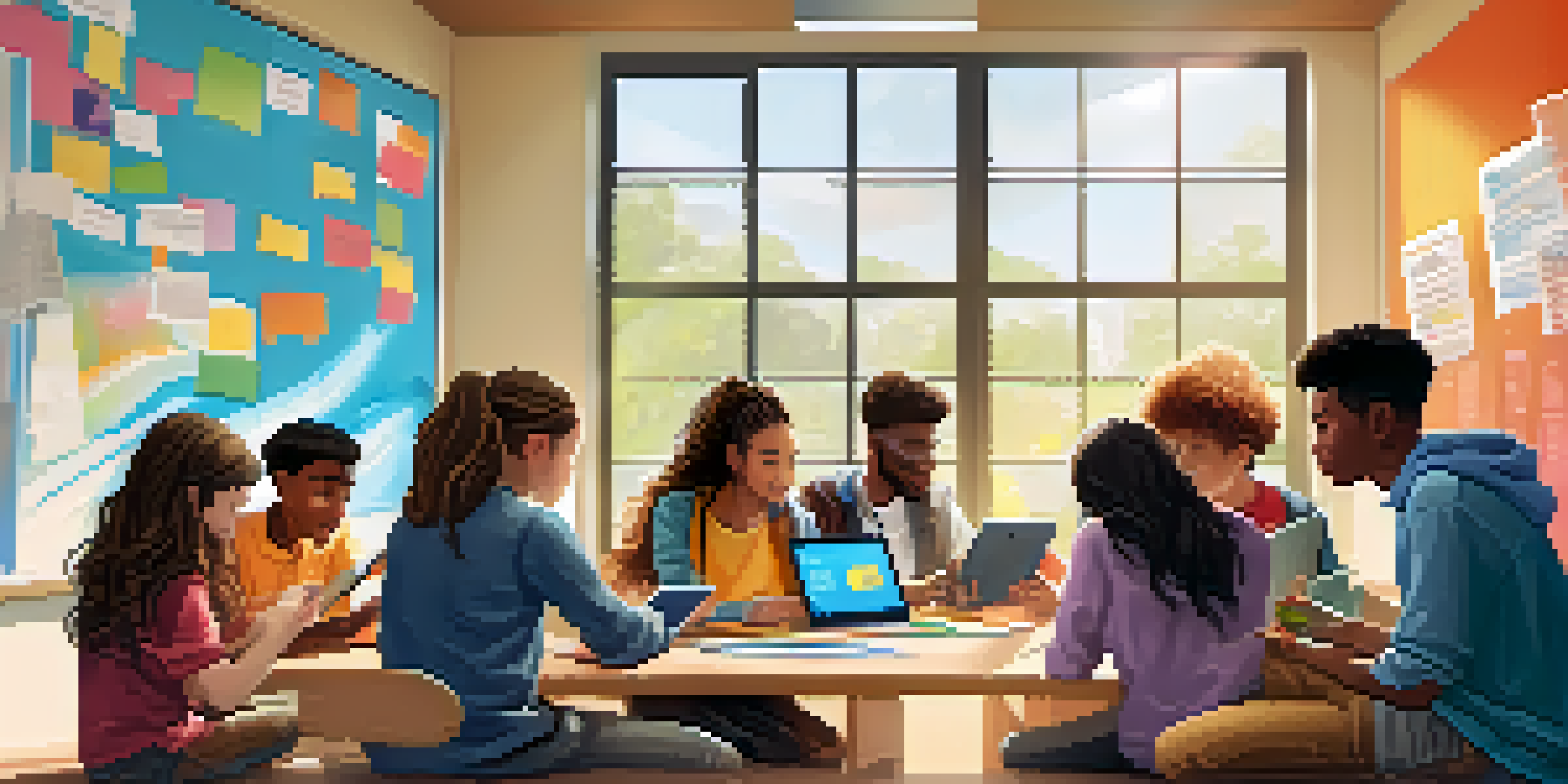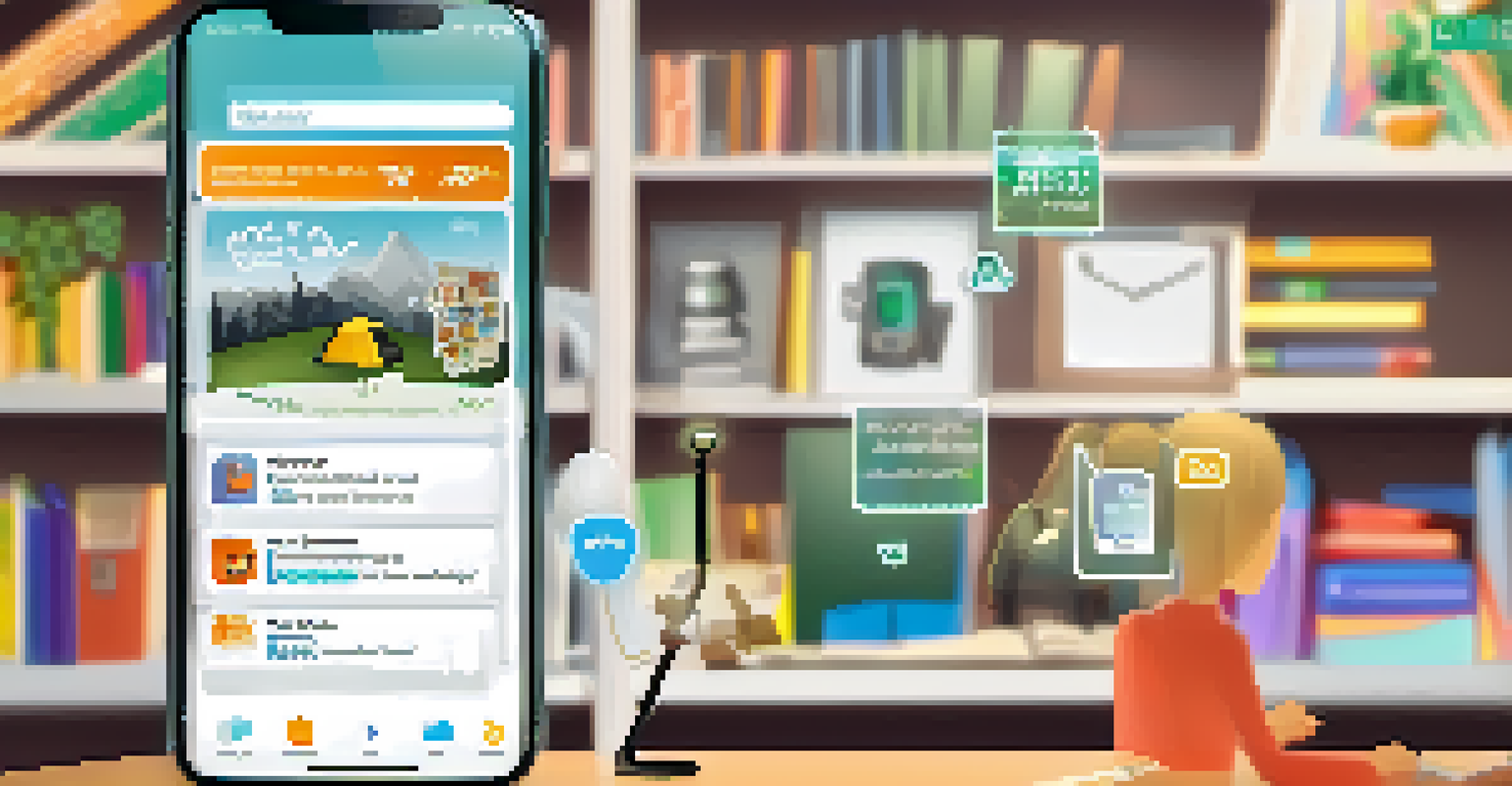How Mobile Learning Apps Facilitate Group Collaboration

The Rise of Mobile Learning Apps in Education
In recent years, mobile learning apps have surged in popularity, transforming the educational landscape. These apps provide accessible, on-the-go learning opportunities that cater to various learning styles. With the increasing reliance on smartphones and tablets, educators and students alike are embracing these tools to enhance the learning experience.
Education is the most powerful weapon which you can use to change the world.
Mobile learning apps offer flexibility, allowing users to learn at their own pace and on their own schedule. This adaptability not only accommodates busy lifestyles but also encourages learners to engage with content more deeply. As a result, more people are turning to these apps as a primary resource for knowledge acquisition.
Furthermore, the integration of collaborative features within these apps has paved the way for enhanced group learning. By enabling real-time communication and shared resources, mobile learning apps promote a sense of community among users, making learning a more interactive and enjoyable process.
Real-Time Communication Tools in Mobile Learning Apps
One of the key features that facilitate collaboration in mobile learning apps is real-time communication. Tools like chat functions and video calls allow learners to discuss concepts and share insights instantly. This immediacy fosters a dynamic learning environment where ideas can flow freely among group members.

For instance, imagine a group of students working on a project from different locations. Using a mobile learning app with built-in chat, they can brainstorm ideas, ask questions, and provide feedback without delay. This kind of instant interaction not only enhances understanding but also builds camaraderie among the group.
Mobile Learning Apps Enhance Flexibility
These apps allow learners to study at their own pace and accommodate different learning styles, making education more accessible.
Moreover, real-time communication tools help overcome geographical barriers, making it easier for diverse groups to collaborate. Whether it's a study group across different time zones or a team working on a shared project, these tools create a seamless experience that keeps everyone connected.
Collaborative Learning Features That Enhance Teamwork
Many mobile learning apps incorporate collaborative features such as shared documents, task assignments, and progress tracking. These elements encourage teamwork and accountability, ensuring that every group member contributes to the project. When tasks are clearly defined and accessible, collaboration becomes more organized and efficient.
The beautiful thing about learning is that no one can take it away from you.
For example, a group of learners can use a shared document in a mobile app to draft their project together. With each member able to edit and comment in real-time, they can build on each other's ideas seamlessly. This collective effort not only enriches the final outcome but also teaches valuable skills in teamwork and communication.
Additionally, progress tracking features help groups stay on target and motivated. By visualizing their achievements and deadlines, team members can celebrate milestones together, reinforcing a sense of shared purpose and commitment.
Gamification: Making Learning Collaborative and Fun
Gamification is another exciting aspect of mobile learning apps that promotes collaboration. By incorporating game-like elements such as points, badges, and leaderboards, these apps motivate learners to engage with content and each other. This friendly competition can inspire group members to support one another in achieving goals.
Imagine a scenario where students earn points for completing collaborative tasks within their mobile app. The more they participate and help each other, the more points they accumulate. This not only adds an element of fun but also encourages a collaborative spirit as learners strive to achieve common objectives.
Real-Time Tools Foster Collaboration
Features like chat and video calls enable instant communication, breaking down geographical barriers and enhancing teamwork.
Furthermore, gamification can help reduce the anxiety often associated with learning. By creating a less formal environment where participants can celebrate their successes together, mobile learning apps foster a positive atmosphere that encourages group collaboration.
Access to Diverse Resources for Group Projects
Mobile learning apps often provide access to a wealth of resources, from articles and videos to interactive quizzes. This treasure trove of information allows groups to explore different perspectives and deepen their understanding of topics. Having a variety of materials at their fingertips enriches discussions and enhances collaborative efforts.
For instance, a group working on a presentation can easily source relevant videos or articles via their app. This ability to access diverse resources not only streamlines the research process but also empowers learners to bring new ideas to the table. As a result, collaboration becomes more informed and well-rounded.
Moreover, the ability to share these resources within the app creates an inclusive learning environment. Participants can recommend articles or tools to each other, fostering a culture of sharing and continuous learning that benefits the entire group.
Flexibility in Learning Styles and Pacing
One of the standout features of mobile learning apps is their ability to cater to various learning styles. Whether someone learns best through visuals, texts, or hands-on activities, these apps provide options that accommodate everyone. This flexibility ensures that all group members can engage meaningfully with the material.
For example, a group project might involve a mix of videos, readings, and interactive exercises. Each member can choose the format that resonates with them most, enabling them to contribute effectively to the group. This personalized approach not only enhances individual understanding but also enriches the group's overall output.
Gamification Encourages Engagement
Incorporating game-like elements motivates learners to collaborate and celebrate achievements, creating a fun learning environment.
Additionally, mobile learning apps allow learners to progress at their own pace. This means that while some members might grasp concepts quickly, others can take the time they need to fully understand. This self-paced learning fosters a more supportive environment, where everyone feels empowered to collaborate without pressure.
Building a Sense of Community Through Collaboration
Ultimately, mobile learning apps contribute to building a sense of community among learners. By facilitating collaboration, these tools create connections that extend beyond the classroom or project. Participants can share experiences, provide support, and celebrate achievements, fostering lasting relationships.
Think about it: when group members collaborate effectively, they develop trust and understanding. This camaraderie not only makes learning more enjoyable but also encourages individuals to take risks and express themselves. In such an environment, everyone feels valued and motivated to contribute their best work.

Furthermore, the community aspect of mobile learning apps can lead to networking opportunities. As learners connect and collaborate, they may form bonds that extend into future academic or professional endeavors. This sense of belonging enhances the overall learning experience, making it not just about acquiring knowledge but also about building meaningful relationships.